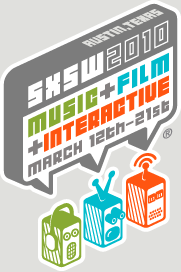In some ways, markets can be thought of as crowdsourced input. While it is perhaps a bit of a stretch to claim that markets facilitate indirect collaboration, a nice example of what I mean is illustrated with the project "One Thousand Paintings".
onethousandpaintings.com is an art experiment that explores the role of crowdsourced input in valuation of art. The project is the brainchild of Swiss artist/Stanford evolutionary biologist Marcel Salathe whose other projects include "Webpages as graphs", "Salathe & White - Art Bond Project". The basic premise behind this experiment is that there is a tremendous uncertainty in the value of artwork. A prominent example of this was illustrated in 2003 when 24 paintings thought to be authentic Jackson Pollocks were discovered. Determining their authenticity, or lack thereof, modifies their value by hundreds of millions of dollars.
So the question behind onethousandpaintings.com is: What if you let the crowd, mediated by the market, determine the value of the art? While you may argue that this is nothing more than supply/demand economics, onethousandpaitings takes it to an entirely new level by incentivizing early adopters with what has been likened to a mashup of "eBay with a pyramid scheme".
The price = 1000 - number on the painting. The first 100 paintings are discounted by 90%, with a 10% decrease in the discount every time 100 paintings are sold. So, for example, painting 50 should cost $950 (1000-50). However if you are one of the first one hundred people to purchase, you get it at the fire sale price of $95. The "indirect collaboration" comes into play when you consider that the value of your painting increases only when others, your collaborators, purchase more paintings.
I'm not sure whether or not this meets the criterion of crowdsourced input on the creative process, but it is surely a nice way to think about markets. Full disclosure, I am the proud owner of 626.
Wednesday, February 3, 2010
Subscribe to:
Post Comments (Atom)





No comments:
Post a Comment